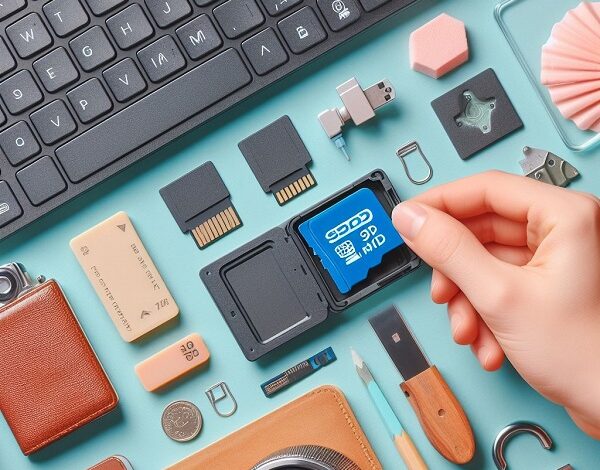How to Format a Memory Card Using CMD: Your Ultimate Guide

Hey there, tech-savvy explorers! In this digital era, memory cards are like our trusty companions, holding onto our precious memories and important files. But hey, there comes a time when you need to give your memory card a makeover.
Whether you’re switching devices or just want a fresh start, understanding how to format a memory card is a handy skill.
So, let’s dive into the exciting world of formatting using the Command Prompt (CMD)!
Unraveling the Magic of Formatting
Think of formatting as digital spring cleaning for your memory card. It’s like wiping the slate clean, bidding farewell to pesky glitches and errors that might have crept in. So, if your memory card is acting a bit moody, formatting can be a game-changer. Not only does it boost performance, but it also extends the life of your card.
Your Guide to Formatting Like a Pro
Step 1: Introducing the Memory Card
First things first, introduce your memory card to your computer by popping it into a card reader or another nifty method.
Step 2: The Command Prompt Quest
It’s time to unveil the magical Command Prompt (CMD)! Tap thoseWindows + R keys, and when the Run dialog appears, type “cmd” and hit Enter. Voila! The Command Prompt window is your gateway to the formatting adventure.
Step 3: Taking the Grand Stage as an Admin
Some formatting quests require a little authority. Right-click the Command Prompt icon in the Start menu and choose “Run as administrator.” That’s your golden ticket to admin-level formatting fun.
Step 4: Embracing DiskPart
In the Command Prompt, type in the spell “diskpart” and press Enter. Watch as the DiskPart utility emerges, ready to tackle storage device mysteries.
Step 5: The Disk Discovery
Type “list disk” and hit Enter. Behold the list of connected devices. Now, this is where you play detective and spot your memory card by its size. Remember, the wrong choice could lead to digital chaos.
Step 6: The Clean Sweep
Now’s the time for a clean sweep! Type “clean” and press Enter. Poof! All those partitions and volumes on your memory card vanish like magic.
Step 7: Birth of a New Partition
A new chapter begins with “Create partition primary.” Give birth to a sparkling new primary partition on your memory card.
Step 8: The Formatting Ritual
Chant “format fs=FAT32 quick” (you can swap “FAT32” if you’re feeling adventurous) and press Enter. The “quick” part ensures a speedy ceremony.
Step 9: A Letter to Remember
Say “assign letter=Y” (replace Y with a cool available drive letter) and press Enter. Your memory card now has an official address.
Step 10: Exit with Style
Bid farewell to DiskPart by typing “exit” and hitting Enter.
Step 11: Cheers to Your Achievement
Bravo! You’ve mastered the art of formatting a memory card using CMD. It’s like giving your memory card a new lease on life.
How to Format a Memory Card in Linux using Terminal.
Linux offers us a world of possibilities. When it comes to formatting a memory card, the process might seem a tad different from what you’re used to on other platforms. Fear not, for we’re here to guide you through the ins and outs of how to format a memory card in Linux using the command line. Let’s embark on this Linux journey together!
Grasping the Essence of Formatting in Linux
Picture formatting in Linux is like painting a fresh canvas. You’re wiping away the old and making way for the new. Formatting ensures your memory card is ready to embrace data with a clean slate, free from errors or clutter. It’s a bit like giving your memory card a spa day, rejuvenating it for optimal performance.
Read more:
- Disk Partition CMD- How to Manage Partitions
- Speed Up Old Windows Using CMD: Simple Tricks for Improved Performance
The Linux Way: Formatting Your Memory Card
Step 1: Connect the Memory Card
Start by connecting your memory card to your Linux machine. Use a card reader or an appropriate method to establish the connection.
Step 2: Open the Terminal
The Terminal is your gateway to the Linux command-line universe. Open it up by pressingCtrl + Alt + T, or search for it in your applications.
Step 3: Identify the Memory Card
Type “lsblk” and press Enter in the Terminal. This command will list all the storage devices, including your memory card. Identify your memory card based on its size.
Step 4: Unmount the Memory Card
Before diving into formatting, you’ll need to unmount the memory card. Type sudo umount /dev/sdX (replace X with the appropriate letter of your memory card) and press Enter.
Step 5: Format the Memory Card
Here comes the pivotal moment. To format the memory card, type sudo mkfs.ext4 /dev/sdX (again, replace X with the appropriate letter). This command formats the memory card using the ext4 file system. You can choose a different file system if you prefer.
Step 6: Assign a Label (Optional)
Want to give your memory card a name? Use the sudo e2label /dev/sdX NewLabel command to assign a label to your freshly formatted memory card.
Step 7: Safely Eject the Memory Card
Once the formatting is complete, ensure you eject the memory card properly. Type sudo eject /dev/sdX (yes, replace X) and press Enter.
The Linux Adventure Continues
You’ve successfully formatted your memory card in Linux using the power of the command line. The Linux world celebrates your accomplishment!
Final Thoughts
In a world where digital data is the currency of memories and productivity, knowing how to format memory cards is a vital skill. Whether you’re embarking on a Linux command-line adventure or harnessing the power of CMD in the Windows realm, the ability to rejuvenate storage devices is invaluable.
By following the steps outlined in these guides, you’ve gained a powerful tool to optimize performance, troubleshoot issues, and embark on new digital journeys with confidence. So, whether you’re a Linux aficionado or a Windows wizard, you’re now equipped to navigate the intricacies of memory card formatting, ensuring that your digital world remains organized, efficient, and ready to capture the moments that matter most.




